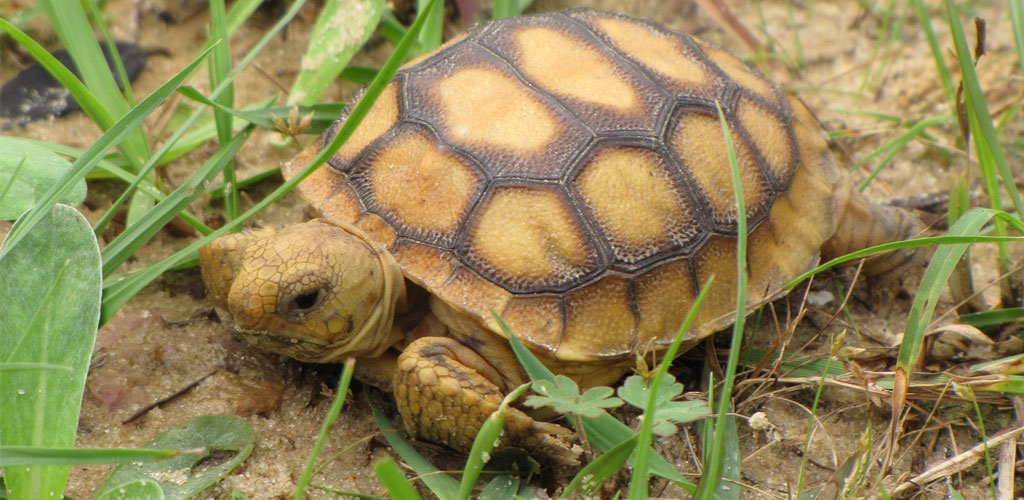Longleaf pine forests once spanned 90 million acres from Virginia to Florida to Texas. Yet, by the late 1990s, after 300 years of land use for timber, agriculture and development, only 3-4% of the forests remained.
This extensive loss of longleaf pine caused a dramatic change in the region and had immense negative impacts on wildlife.
Since 2007, the National Wildlife Federation and the Alabama Wildlife Federation have worked side by side to restore over 13,825 acres of longleaf pine habitat on private lands in Alabama — approximately the size of 10,455 football fields of habitat for wildlife to flourish and thrive.
These forests contain some of the most biodiverse and important natural areas for plants and animals in the United States. A sample of wildlife species found in longleaf pine forests include:
- Northern bobwhite quail
- Red-cockaded woodpeckers
- Gopher tortoises (a baby is pictured above)
- Striped newts
- Southeastern pocket gophers
- Pinewoods tree frogs
- Mimic glass lizards
- Pine and prairie warblers
- Eastern indigo snakes
- Bachman’s sparrows
- White-tailed deer
- Eastern wild turkey
Restoring longleaf pine savannas of the southeastern United States benefits some of the world’s most diverse plant communities and wildlife species.
When forests are managed with the traditionally open canopy structure, a savanna-like environment is created allowing sunlight to stream to the forest floor where grasses and herbs grow for wildlife to live and graze.

